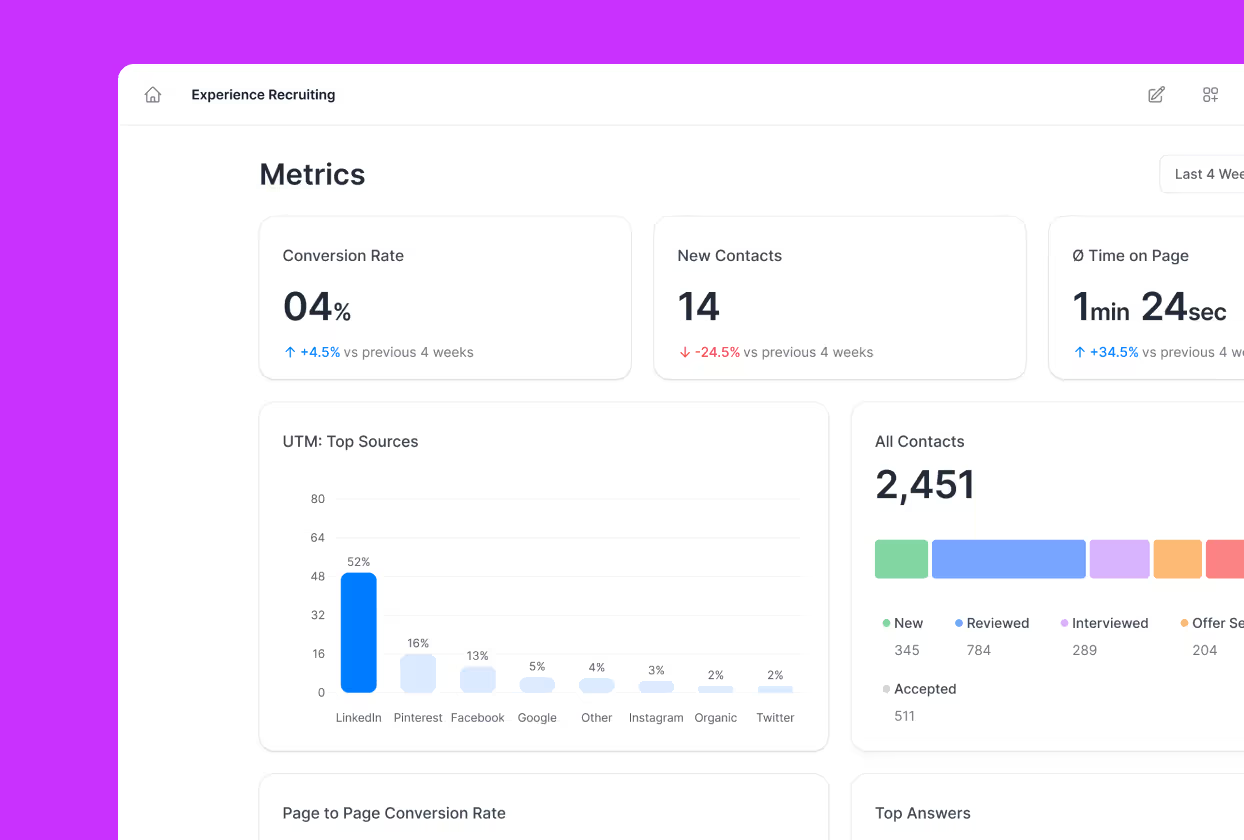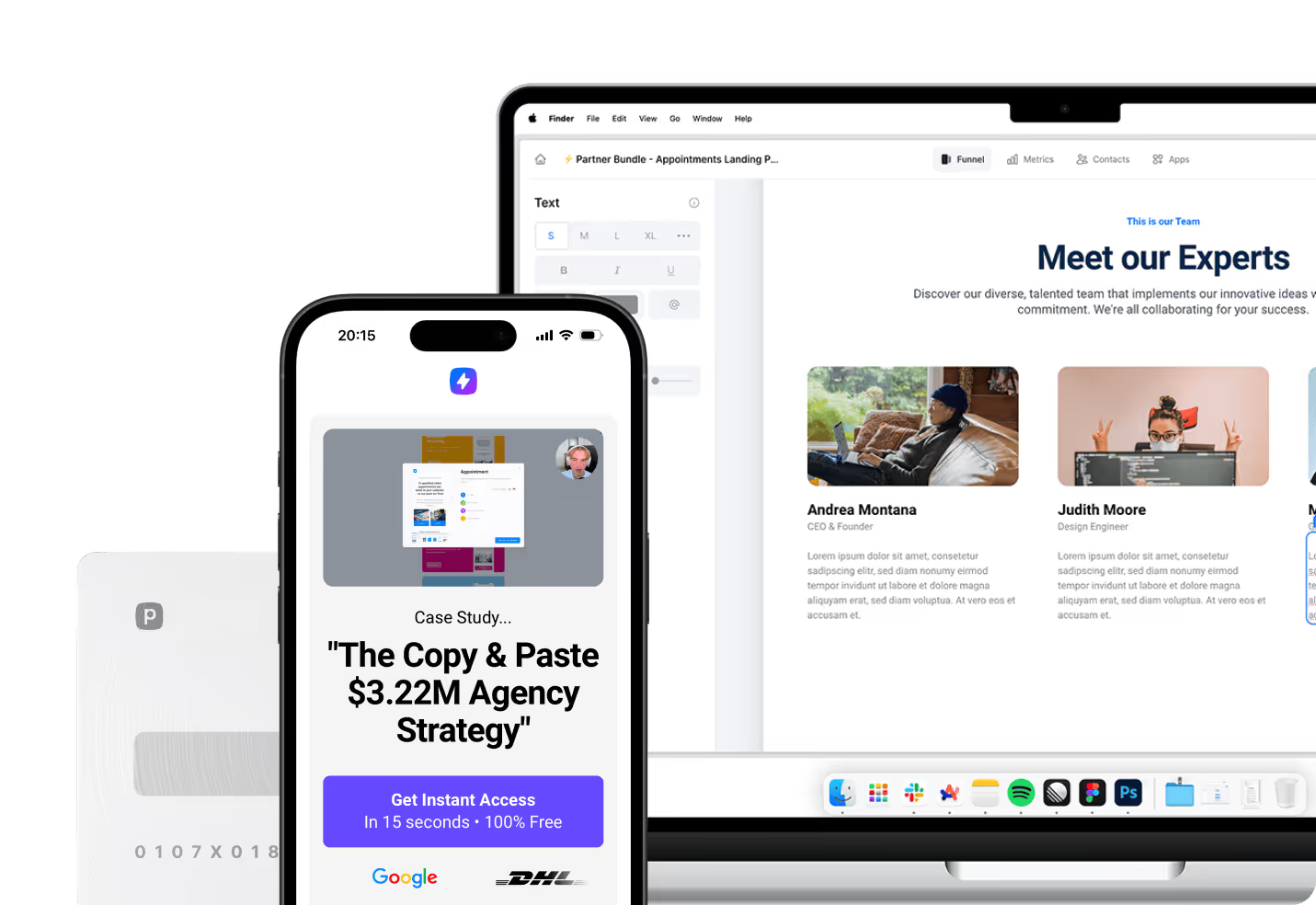Digital marketing has evolved dramatically since the pandemic reshaped how businesses connect with customers online. Today’s entrepreneurs and established companies alike face intense competition for consumer attention, making effective landing pages more crucial than ever. With remote work normalizing digital-first strategies and social media algorithms constantly changing, having reliable tools for lead generation has become a business necessity rather than a luxury. Two platforms that consistently appear in marketing discussions are LaunchRock and Leadpages, each offering distinct approaches to capturing leads and driving conversions in this increasingly crowded digital landscape.
What Makes LaunchRock Different from Leadpages
LaunchRock carved out a unique niche by focusing specifically on pre-launch marketing campaigns and “coming soon” pages. This specialized approach makes it particularly attractive for startups and entrepreneurs preparing to launch new products or services. The platform’s streamlined interface allows users to create professional-looking landing pages within minutes, without requiring any technical expertise or coding knowledge. LaunchRock’s emphasis on social sharing and viral marketing mechanics helps businesses build anticipation and generate buzz before their official launch.
Leadpages takes a broader approach, positioning itself as a comprehensive lead generation and conversion optimization platform. Rather than focusing solely on pre-launch scenarios, Leadpages provides tools for the entire customer journey, from initial awareness to final purchase. The platform offers over 250 professionally designed templates, advanced A/B testing capabilities, and integrated e-commerce functionality. This comprehensive approach makes Leadpages suitable for businesses at various stages of growth, from startups to established enterprises.
Transform Your Mobile Marketing with Perspective
While traditional platforms like LaunchRock and Leadpages address different aspects of lead generation, a new generation of tools has emerged specifically designed for today's mobile-first environment. Perspective Funnels represents this evolution, offering a mobile-first funnel builder that's not merely adapted from desktop versions but built from the ground up for mobile users. This approach recognizes that most audiences are scrolling social media on their phones, requiring funnels that match their native mobile experience.
What sets Perspective apart is its ability to deliver fast loading speeds, modern design templates, and interactive tools that create engaging multi-step experiences for visitors. The platform combines built-in CRM capabilities, comprehensive analytics, and personalization features within a single solution. This integrated approach makes it particularly attractive for creators, agencies, and mobile-focused marketers who need to build high-converting funnels quickly. Users can create professional funnels in just 30 minutes, representing a significant reduction in build time compared to traditional platforms, while potentially boosting conversion rates substantially. The platform seamlessly connects with over 2,000 apps including Google Analytics, Facebook Pixel, and Calendly, providing the integration flexibility that modern marketing operations demand.
Core Platform Capabilities
The fundamental difference between these platforms lies in their scope and intended use cases. LaunchRock excels at creating anticipation through its specialized pre-launch features, including countdown timers, social sharing incentives, and referral tracking systems. The platform’s drag-and-drop interface makes it easy to customize templates with brand colors, logos, and messaging. However, its functionality remains primarily focused on capturing email addresses and building pre-launch momentum.
Leadpages offers significantly more versatility with its extensive feature set designed for ongoing marketing campaigns. The platform includes pop-up forms, alert bars, checkout pages, and advanced analytics tools that provide detailed insights into visitor behavior and conversion patterns. This broader functionality allows marketers to create complex sales funnels and optimize their campaigns based on real-time performance data.
Which Platform Offers Better Value for Money
Budget considerations play a crucial role in platform selection, especially for small businesses and startups operating with limited resources. LaunchRock’s pricing structure reflects its focused approach, with monthly plans starting at $29 and annual subscriptions available at $20.75 per month. The platform also offers a lifetime access option for $349, which can be cost-effective for businesses planning long-term pre-launch campaigns. These pricing tiers make LaunchRock accessible to entrepreneurs and small businesses with tight marketing budgets.
Leadpages implements a tiered pricing strategy that scales with feature access and business requirements. The Standard plan begins at $37 per month when billed annually, providing access to essential features including unlimited traffic, five landing pages, and basic conversion tools. The Pro plan, priced at $74 per month annually, unlocks unlimited landing pages, advanced A/B testing, and e-commerce capabilities. Both plans include comprehensive support and integration options that justify the higher price point for businesses requiring advanced functionality.
Long-term Cost Considerations
When evaluating long-term value, businesses must consider their growth trajectory and evolving marketing needs. LaunchRock’s lower initial cost may seem attractive, but its limited feature set could necessitate additional tools as marketing requirements become more sophisticated. This scenario often leads to higher total costs as businesses invest in multiple point solutions to achieve comprehensive marketing capabilities. The platform’s lifetime pricing option provides cost predictability but may not offer sufficient functionality for growing businesses.
Leadpages’ higher subscription cost delivers greater long-term value through its all-in-one approach to digital marketing. The platform eliminates the need for multiple tools by providing comprehensive functionality within a single subscription. This consolidation reduces complexity, streamlines workflows, and often results in lower total cost of ownership compared to managing multiple specialized tools. Businesses planning for growth will find Leadpages’ scalable pricing structure more accommodating as their marketing needs expand.
How Do Templates and Customization Compare
Template quality and customization options significantly impact the effectiveness of landing page campaigns and overall brand presentation. LaunchRock provides a curated selection of templates specifically designed for pre-launch scenarios, featuring clean designs that effectively capture visitor attention and encourage email sign-ups. The customization options allow users to modify colors, fonts, background images, and basic layout elements to align with their brand identity. However, the template library remains relatively small, and advanced customization requires some technical knowledge.
Leadpages dramatically outperforms LaunchRock in template variety and customization depth, offering over 250 professionally designed templates optimized for different marketing objectives. These templates span various industries and use cases, from webinar registrations and product launches to lead magnets and sales pages. Each template incorporates conversion optimization principles based on extensive testing and performance data. The platform’s customization capabilities are extensive, allowing precise control over every design element through an intuitive drag-and-drop interface.
Essential Template Features for Modern Marketing
Both platforms recognize the importance of mobile optimization in today’s digital landscape. However, their approaches differ significantly:
- LaunchRock templates: Focus on simplicity and social sharing functionality, with basic responsive design elements
- Leadpages templates: Include advanced mobile optimization, conversion-focused layouts, and industry-specific designs
- Customization depth: LaunchRock offers basic color and font changes, while Leadpages provides granular control over all design elements
Design Flexibility and Brand Consistency
Brand consistency across marketing materials becomes increasingly important as businesses grow and establish their market presence. LaunchRock’s limited template selection and customization options may constrain businesses with specific branding requirements or unique design preferences. While the available templates are well-designed, they may not accommodate all brand aesthetics or industry-specific needs. This limitation can impact brand consistency across different marketing campaigns and touchpoints.
Leadpages addresses brand consistency challenges through its extensive customization options and template variety. The platform allows businesses to create custom brand guidelines within the system, ensuring consistent colors, fonts, and design elements across all landing pages. Advanced users can implement custom CSS for precise design control, while beginners can achieve professional results using the built-in customization tools. This flexibility supports brand consistency while accommodating diverse marketing objectives and creative requirements.
What Integration Options Are Available
Modern marketing success depends heavily on seamless integration between different tools and platforms in your marketing technology stack. LaunchRock offers basic integration capabilities that fulfill its core purpose as a pre-launch landing page builder. The platform connects with popular email marketing services, allowing automatic transfer of captured leads to your preferred email marketing system. Social media integration enables visitors to share campaign pages across various platforms, amplifying reach through viral marketing mechanics.
However, LaunchRock’s integration ecosystem remains relatively limited compared to comprehensive marketing platforms. Businesses requiring advanced integrations with CRM systems, analytics platforms, or e-commerce solutions may find LaunchRock’s capabilities insufficient without additional workarounds or manual processes. This limitation can create workflow inefficiencies and data silos as marketing operations become more sophisticated.
Comprehensive Marketing Ecosystem
Leadpages substantially outperforms LaunchRock in integration depth and breadth, supporting direct connections with over 90 popular marketing, analytics, and e-commerce tools. These integrations include major email marketing platforms like MailChimp and ConvertKit, CRM systems such as HubSpot and Salesforce, and analytics tools including Google Analytics. The platform also connects with Zapier, exponentially expanding integration possibilities to thousands of additional applications.
This extensive integration network allows businesses to create seamless workflows, automate lead nurturing processes, and maintain data consistency across their entire marketing technology stack. Automated data synchronization eliminates manual data entry, reduces errors, and ensures that lead information flows smoothly between different systems. For organizations utilizing multiple marketing tools, Leadpages eliminates data silos and reduces administrative overhead through these comprehensive integrations.
Which Platform Provides Better Analytics
Data-driven decision making has become essential for marketing success, making analytics capabilities a critical factor in platform selection. LaunchRock provides basic analytics functionality focused on measuring pre-launch campaign performance, including visitor counts, sign-up rates, and referral activities. The platform offers insights into which social sharing channels drive the most traffic and identifies influential advocates who generate multiple referrals. While these analytics adequately serve LaunchRock’s core purpose, they lack depth for comprehensive marketing analysis.
Leadpages delivers substantially more robust analytics and optimization tools designed for ongoing campaign improvement. The platform provides real-time conversion tracking across all pages and conversion elements, allowing marketers to monitor performance metrics as campaigns unfold. Built-in A/B testing functionality enables systematic comparison of page variants to identify the highest-performing designs, copy, and calls-to-action. Results are presented with statistical significance indicators, helping marketers make confident, data-driven decisions.
Performance Optimization Capabilities
Continuous optimization becomes crucial for maximizing return on marketing investment and improving campaign effectiveness over time. LaunchRock’s limited analytics serve basic tracking needs but provide minimal insights for strategic refinement or systematic improvement. The platform’s A/B testing capabilities are restricted, constraining marketers’ ability to optimize page elements systematically or identify the most effective messaging approaches.
Leadpages’ comprehensive analytics suite enables continuous performance improvement through systematic testing and detailed visitor behavior analysis. The platform tracks conversion paths, showing how visitors navigate through multi-step funnels and identifying potential optimization opportunities. This granular data extends to all conversion tools, including pop-ups, alert bars, and checkout processes, providing a complete picture of campaign performance and user engagement patterns.
Best Practices for Platform Selection
Choosing the right landing page platform requires careful evaluation of your specific business needs, growth plans, and available resources. Consider these essential factors when making your decision:
- Assess your primary marketing objectives and determine whether you need a specialized pre-launch tool or a comprehensive marketing platform that supports ongoing campaigns
- Evaluate your technical expertise and available resources, as more sophisticated platforms may require additional learning time or dedicated personnel to maximize their potential
- Consider your budget constraints and calculate the total cost of ownership, including potential additional tools needed to supplement platform limitations
- Analyze your integration requirements and ensure the chosen platform connects seamlessly with your existing marketing technology stack
- Review template options and customization capabilities to ensure they align with your brand requirements and design preferences
- Examine analytics and optimization features to determine whether they provide sufficient insights for your decision-making processes
- Consider your growth trajectory and select a platform that can scale with your evolving marketing needs rather than requiring migration to new tools
How to Maximize Your Landing Page Success
Success with either platform depends on implementing proven strategies and best practices that drive conversions and achieve marketing objectives. Both LaunchRock and Leadpages benefit from strategic approaches to content creation, design optimization, and audience targeting. Focus on creating compelling headlines that clearly communicate your value proposition and motivate visitors to take action. Your messaging should address specific pain points and demonstrate how your product or service provides solutions.
Design elements play a crucial role in conversion optimization, regardless of which platform you choose. Maintain visual hierarchy through strategic use of colors, fonts, and spacing to guide visitors toward your primary call-to-action. Minimize distractions by removing unnecessary elements and focusing attention on the most important conversion points. Mobile optimization has become essential, as increasing numbers of visitors access landing pages through mobile devices.
Conversion Rate Optimization Strategies
Systematic testing and optimization can significantly improve landing page performance over time, regardless of your chosen platform. Key optimization strategies include:
- Start with single-element tests to isolate the impact of specific changes, such as headline variations, button colors, or form field requirements
- Document your testing results and apply successful elements to future campaigns
- Monitor key performance indicators regularly and adjust your strategies based on actual data rather than assumptions
- Create targeted landing pages for different traffic sources, demographics, or customer segments
- Customize messaging and offers based on visitor behavior, referral sources, or previous interactions with your brand
Advanced Marketing Tactics
Audience segmentation and personalization can dramatically improve conversion rates by delivering more relevant experiences to different visitor groups. This personalized approach increases relevance and improves the likelihood of conversion across different audience segments. Consider implementing progressive profiling to gather additional information about leads over time without overwhelming them with lengthy forms initially.
Start Building High-Converting Landing Pages Today
Selecting between LaunchRock and Leadpages ultimately depends on your specific marketing needs, budget considerations, and long-term business objectives. LaunchRock offers an excellent solution for businesses focused on pre-launch marketing with limited budgets and straightforward requirements. Its specialized approach and affordable pricing make it attractive for startups and entrepreneurs preparing product launches. However, businesses with diverse marketing needs or growth plans may find its limitations constraining as their requirements evolve.
Leadpages provides a comprehensive solution that accommodates various marketing objectives throughout a business lifecycle. While requiring a higher initial investment, the platform’s extensive features, integration capabilities, and optimization tools deliver greater long-term value for businesses serious about data-driven marketing. The platform’s scalability and versatility make it suitable for organizations planning sustainable growth and sophisticated marketing strategies.
Both platforms offer free trials that allow you to test their capabilities before making a commitment. Take advantage of these trial periods to evaluate how each platform aligns with your specific needs, technical capabilities, and marketing objectives. Consider starting with the platform that best matches your immediate requirements while keeping your long-term growth plans in mind for future platform decisions. For mobile-driven marketers seeking rapid deployment, personalized experiences, and superior performance optimization, Perspective Funnels emerges as a compelling choice that bridges the gap between specialized tools and comprehensive platforms in today’s mobile-first digital landscape.


















